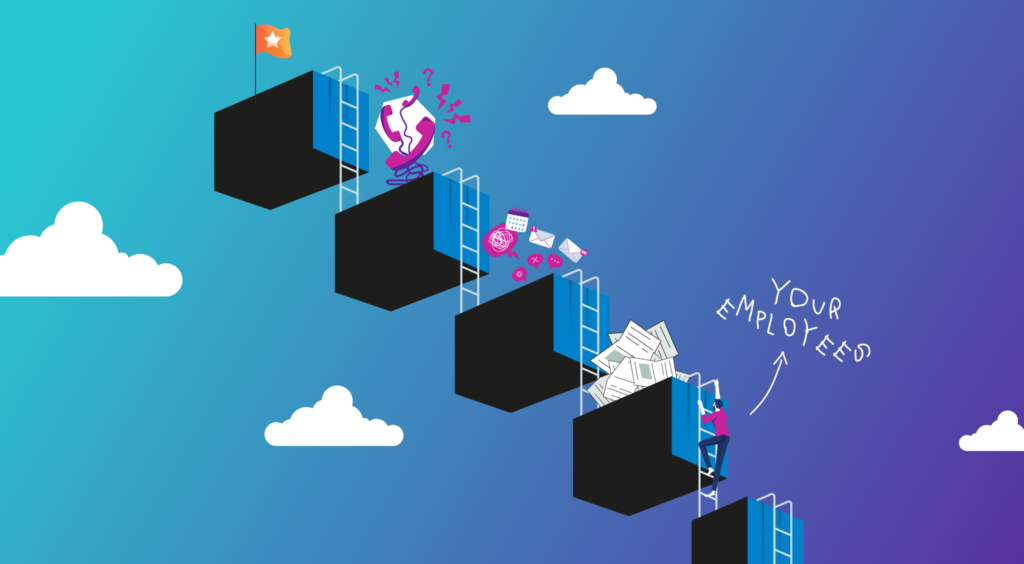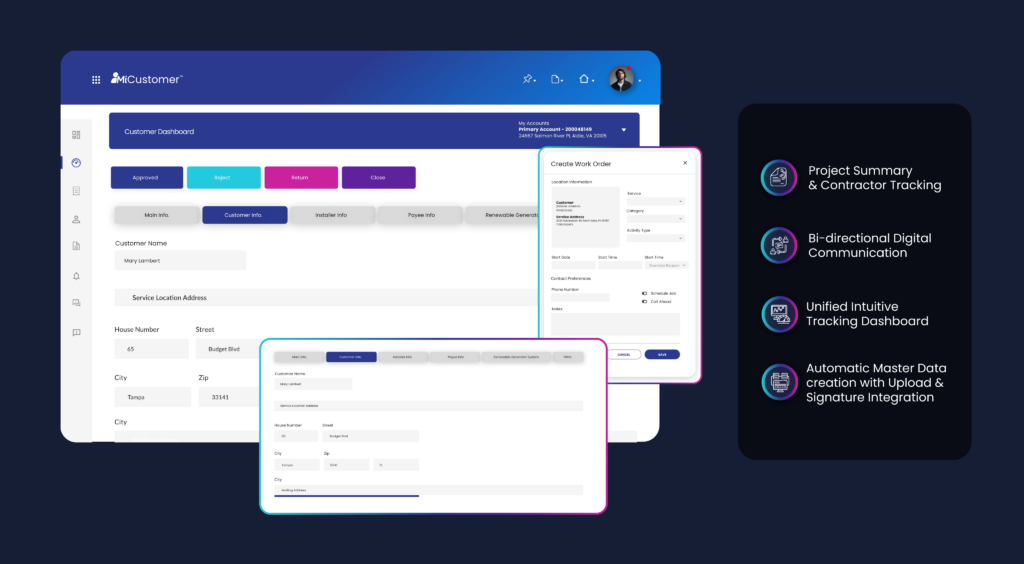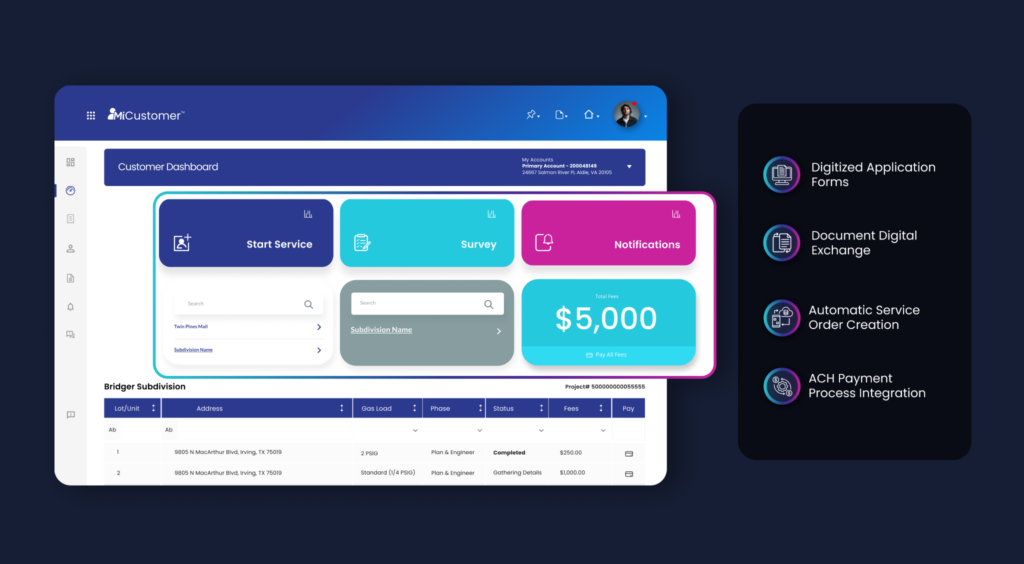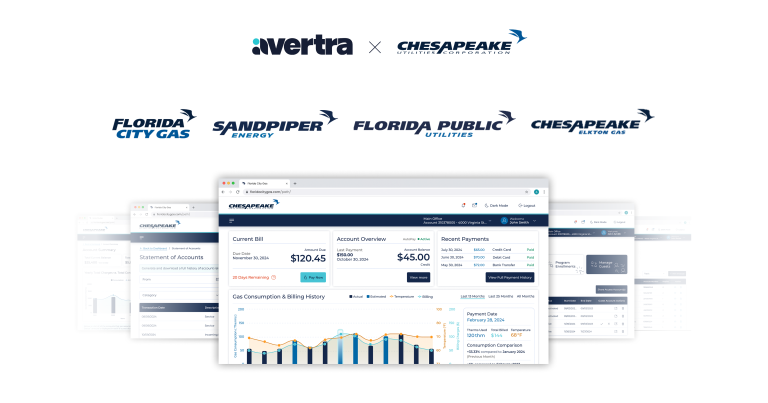It’s not a shortage of ambition holding back the utility world, but the missing tools and old-school ways disabling it from moving forward.
For too long, the industry has been caught in a web of outdated practices, whether it’s line extensions, solar installations, or other utility projects. Why, you may ask? Well, it’s largely due to the lack of a comprehensive builder portal. And so, utilities find themselves in an entanglement representing a cycle of frustration and lost opportunities.
Let’s take a look at the key players and the challenges they directly encounter.
Stuck in the Past
Imagine trying to text on a flip phone in a smartphone world — it’s quite similar to how some utilities are managing their projects. Despite efforts to utilize existing resources, the lack of a builder portal frequently leads utilities into a state of chaos affecting both employees and customers. This situation creates challenges in daily operations and customer interactions, significantly impacting the utility’s overall efficiency and growth.
The Daily Grind: A Story of Disarray and Delays
Outdated utility practices are more than just inconveniences – they’re roadblocks to progress for everyone involved.
Home Makeovers: Not All Smooth Sailing
Take homeowners who are expanding their homes for instance, they’re buzzing with excitement at the thought of their upgraded living space. However, they can’t relish it until the required line extension work is completed by the utility. And so, they find themselves constantly on the phone with the utility company, seeking updates. They want a smooth process where information comes to them, not one where they have to chase it down. After all, nobody likes being kept out of the loop, especially when it comes to something as personal and significant as their home.
Builders, meanwhile, are on the frontlines, turning visions of new homes into real, tangible structures. Surprise surprise… They also run into several roadblocks: They’re swamped with the task of delivering heaps of paperwork to utilities just to get started. But the real challenge? The hours spent on the phone, inquiring about updates on inspections and approvals. It’s a time-consuming dance that keeps them away from the construction site, where their real work and passion lie. How much simpler it would be with a way to streamline these processes — a digital solution where they could upload files, receive automatic updates, and manage projects efficiently.
The Workforce Struggle: More Than Meets the Eye
Utility employees aren’t any different. CSR agents spend their days juggling call after call from frustrated customers. Remember that homeowner seeking updates we just talked about? There’s about another 100 of them, all dialing CSR agents, all looking for answers. This means CSRs hardly get a chance to dive into work that really makes a difference.
Key Account Managers, constantly zigzagging between last-minute changes and urgent calls from builders. They’re swamped, when they could be spending time building real, lasting relationships.
And let’s not forget about the Project Managers who can’t seem to catch a break. Between the mountain of paperwork, endless spreadsheet updates, and constant email chains, they’re left wondering if there’s a clearer, more organized way to keep everything on track.
Each of these roles, integral to the utility’s success, is caught in a cycle of inefficiency that begs for a better way.

Utilities Caught in the Thick of It All
The web of inefficiency isn’t just about customers and employees — it’s putting utility companies themselves in a tough spot. Imagine a tap that only drips when it should be flowing. That’s the scenario utilities are facing by sticking to manual processes.
- Revenue Roadblocks: When projects are bogged down by manual processes, it delays the completion of projects. Since they’re major sources of revenue, these delays mean the utilities wait longer to receive payments, directly affecting their cash flow.
- Increased Errors: Sticking with old-fashioned methods often leads to more errors. This means more time and resources spent in resolving disputes and correcting mistakes, which not only prolongs payments but also adds layers of complexity to daily operations.
- Reputation Risk: Sluggish and inefficient processes directly impact customer experience. Without modern, customer-friendly systems, utilities risk damaging their reputation and lowering J.D. Power scores.
A Digital Makeover for Utilities
It’s pretty clear what the utility world needs right now: a digital leap. A way to tap into all the hours lost to inefficiency and turn them into progress. Don’t think of it as just adding another layer of tech; think of it as simplifying, streamlining, and bringing a much-needed breath of fresh air for everyone involved.
And if you’re wondering how to do this, well…
All Digital, All Simplified: MiCustomer DXP
MiCustomer DXP steps in as this much-needed solution. A comprehensive platform designed to address specific challenges and bridge the gap between communities, utilities, and builders.
Here’s a small glimpse into what it can offer:
- Clear Bi-directional Communication: Keeps everyone – utilities, builders, customers – in the loop with easy updates and a way to chat back and forth.
- Paperless Document Handling: Transforms document management into a smooth, paperless experience, streamlining operations and supporting environmental sustainability.
- Smooth Financial Transactions: Streamlines and speeds up payments, particularly for large-scale transactions, using ACH systems to cut down on administrative delays and boost project progress.
- Comprehensive Project Lifecycle Management: From the initial application to the final inspection, ensures every phase of a project is meticulously managed.


In short, what MiCustomer DXP brings to the table is connection.
This is an opportunity for utilities to really connect – with the families counting on them, and the builders turning blueprints into homes. A shift that’s about building a community spirit, about understanding and supporting each other better. It’s a move that promises to turn every neighborhood into a place where everyone, from the utility worker to the homeowner, feels more connected, more involved, and more in tune with each other’s needs.




















